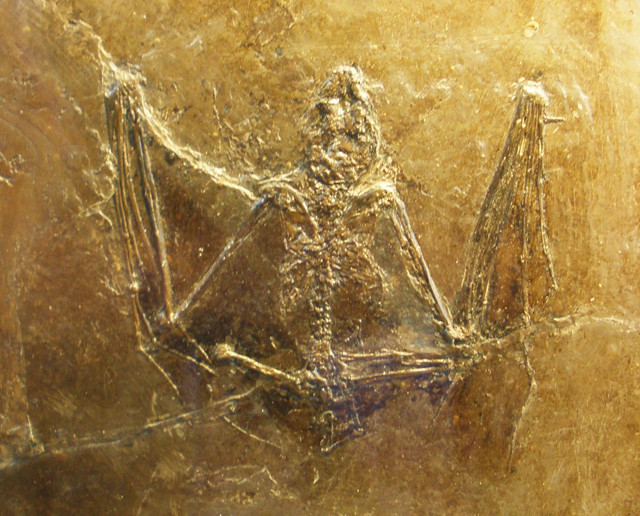
by Mary Caperton Morton Friday, January 8, 2016

Palaeochiropteryx, a 49-million-year-old bat, likely had reddish-brown coloration when it lived. Credit: Ghedoghedo, CC BY-SA 3.0.
Studies of pigments preserved in fossil feathers have changed our perception of how colorful dinosaurs were. Now, researchers have revealed the true colors of some of the first flying mammals as well. Two species of bats that lived during the Eocene about 50 million years ago were likely reddish-brown in color, according to a new study published in Proceedings of the National Academy of Sciences.
Scientists led by Caitlin Colleary, a doctoral student now at Virginia Tech University, studied how melanin pigment is preserved in fossils over time. For decades, the organelles that produce melanin, called melanosomes, have been observed in well-preserved fossils of a number of species, but scientists long suspected the structures might instead be fossils of bacteria that invaded the specimens after burial.
By replicating the conditions under which the fossils formed using high-pressure, high-temperature experiments, the researchers determined that some exceptionally preserved fossils do indeed contain remnants of melanin, which can be used to determine coloration. Melanin comes in two distinct colors: reddish-brown phaeomelanin and black eumelanin. The bat fossils — both found in Germany and belonging to the species Palaeochiropteryx and Hassianycteris — were found to be colored by phaeomelanin.
“Importantly, we see that the different melanins are found in organelles of different shapes: reddish melanosomes are shaped like little meatballs, while black melanosomes are shaped like sausages,” said co-author Jakob Vinther of the University of Bristol in England in a statement. Because this pattern is also seen in fossils, we can “easily determine color from fossils by simply looking at the melanosome shape,” he said.
The team plans to continue studying coloration of ancient fossils from a number of lineages. “We have now studied tissues from fish, frogs and tadpoles; hair from mammals; feathers from birds; and ink from octopus and squids,” Colleary said in a statement. “They all preserve melanin … Now, we can confidently fill in some of the original color patterns of these ancient animals.”
© 2008-2021. All rights reserved. Any copying, redistribution or retransmission of any of the contents of this service without the expressed written permission of the American Geosciences Institute is expressly prohibited. Click here for all copyright requests.